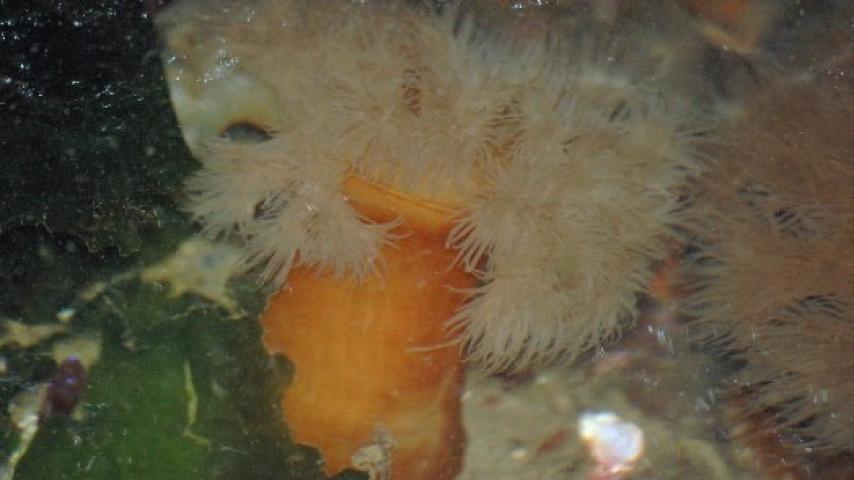Plumose Anemone (Metridium spp.)
These common anemones are easily recognized by their abundant, much-branched tentacles, enough of them to create a feathery (plumose) effect.

KINGDOM Animalia - PHYLUM Cnidaria - CLASS Anthozoa - ORDER Actiniaria - FAMILY Metridiidae
A larger species (Metridium giganteum) is the largest Puget Sound anemone, with a column to 60 cm tall, and has well over 100 tentacles. As it grows well on dock pilings and even the underside of floating docks, it is often seen. A smaller species (Metridium senile) is also common and is more likely to be seen in tide pools; its tentacles never number more than 100.
Plumose anemones bear two types of tentacles, the common ones used for feeding and much less common ones used for defense. The latter can be extended to 3-4x their resting length while “searching” the water around them. If they encounter another species of anemone or a different genetic clone of the same species, the tip breaks off and adheres to the other individual, killing cells at that spot and possibly the entire animal.
Another means of defense is provided by acontia, threadlike structures that grow from the walls of the coelenteron, the interior digestive tube of the animal. These threads can be ejected from the mouth or even shot though the body wall. They carry nematocysts, the stinging cells of all cnidarians, just as the feeding tentacles do.
Anemones and other members of the phylum Cnidaria basically consist of two body layers, an outside derived from the ectodermal layer of the body and an inside devoted to digestion and assimilation of nutrients derived from the endoderm. The “middle” of the body, with primitive muscle cells, is also derived from the ectoderm. There is not much in the way of discrete organs in these animals. In fact, cnidarians contain fewer types of cells than are found in single organs in more advanced animals!
Anemones are predators. Plumose Anemones take just about anything that floats by, including small fish, but most of their prey is not much larger than microscopic.
Anemones reproduce asexually or sexually. Asexual reproduction can consist of budding off new individuals, or, in plumose anemones, pedal laceration. In that process, the anemone moves away from its point of attachment and leaves bits of its pedal disk behind, those growing into new individuals.
Sexual reproduction is accomplished by the shedding of male and female gametes (sperm and eggs) during the summer spawning season, and the resulting larvae dispersing and eventually attaching to the bottom in their new home.


